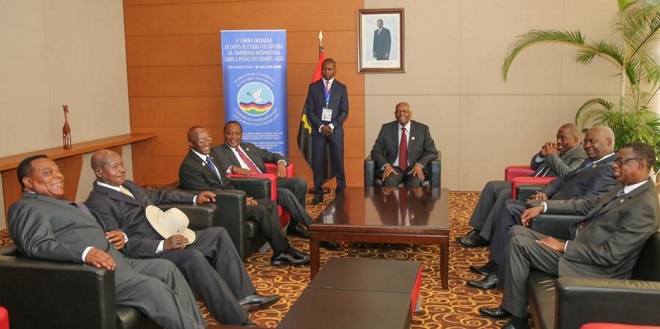
Luanda, Angola | AFP | When Angolan President Jose Eduardo dos Santos steps down and his successor is chosen in Wednesday’s elections, it will bring to an end a 38-year reign dominated by his unrelenting authoritarian style.
Though seldom seen in public, he has been a looming presence in daily life for as long as most Angolans can remember, maintaining fierce control over the country throughout its devastating civil war and recent oil boom.
Now aged 74 and reportedly in poor health, Dos Santos became president in 1979, making him Africa’s second-longest-serving leader — one month shy of Equatorial Guinea’s Teodoro Obiang Nguema.
Until the 27-year civil war ended in 2002, Dos Santos presided over a country torn apart by conflict as his People’s Movement for the Liberation of Angola (MPLA) government fought rebels led by the UNITA group.
He has been credited for leading Angola out of the war, moving away from hardline Marxism and fostering a post-war oil boom and foreign investment surge that transformed central Luanda.
But his rule has also been criticised as secretive and corrupt, with Angola’s citizens suffering abject poverty as his family and the elite enriched themselves.
– ‘Instinct for survival’
He is “an accomplished and shrewd economic and political dealmaker with an instinct for political survival,” said Alex Vines of Chatham House, a British think-tank.
Married to the glamorous former air hostess Ana Paula, who is 18 years his junior, his children include Isabel, who is head of the state-owned Sonangol oil company and reputed to be Africa’s richest woman — worth $3 billion (2.55 billion euros).
From humble beginnings as the son of a bricklayer, Dos Santos joined the MPLA as a teenager and rose quickly through party ranks as a fighter during Angola’s struggle for independence from Portugal.
After stints in Kinshasa and Brazzaville, he went to Azerbaijan to study petroleum engineering, returning fluent in Russian and French, in addition to his mother-tongue Portuguese.
In 1979, following the sudden death from cancer of Angola’s liberation president Agostinho Neto, Dos Santos — then the planning minister — was sworn in as president.
A presidential election in 1992 was aborted before a second-round vote when his battlefield rival Jonas Savimbi claimed the vote was rigged.
The civil war reignited until Savimbi was killed in 2002.
During the 2012 election campaign, Dos Santos made a series of unexpected appearances at public rallies, wearing colourful T-shirts and promising better universities and jobs for young people.
But his policies remained little changed after the vote.
Map showing the longest-serving African leaders after Angola’s Dos Santos agrees to step down after 39 years https://t.co/zzRdRGJJUV pic.twitter.com/1OMcx5iSOU
— AFP news agency (@AFP) August 21, 2017
– Controlling presence –
As head of the military, police and cabinet, the president operates with few constraints.
He chooses senior judges and had MPLA allies in all public agencies, including the supposedly independent electoral commission.
The state keeps a firm hand on the media, and his picture often appeared on the front pages of newspapers as well as on countless billboards and posters.
Angola has become a major supplier of oil to China, and Dos Santos built close ties with the Asian powerhouse.
But while he sought to present himself as a rock of stability, rights activists and opposition members accuse him of systematic repression.
In a 2013 interview for Brazilian television, he said that his rule had been “too long, too long,” but added that decades of war “meant we couldn’t strengthen state institutions or even carry out the normal process of democratisation.”
Dos Santos has reportedly received cancer treatment in Barcelona over several years.
Always immaculately dressed, Dos Santos has split his time between his presidential palace in Luanda and a second residence south of the capital.
He rarely travelled abroad on official business, but is said to enjoy music and poetry as well as cooking fish, and was once a keen footballer.
 The Independent Uganda: You get the Truth we Pay the Price
The Independent Uganda: You get the Truth we Pay the Price



